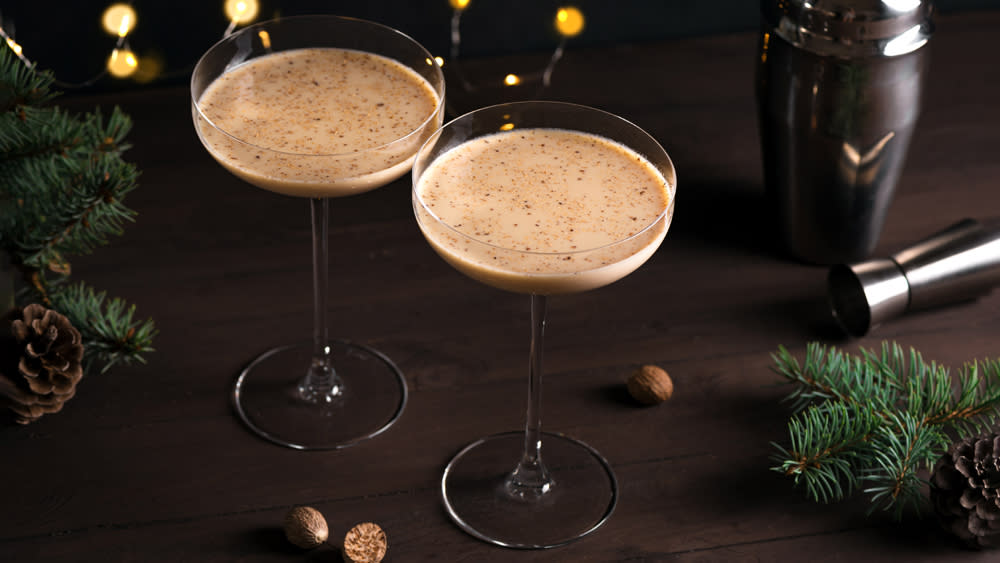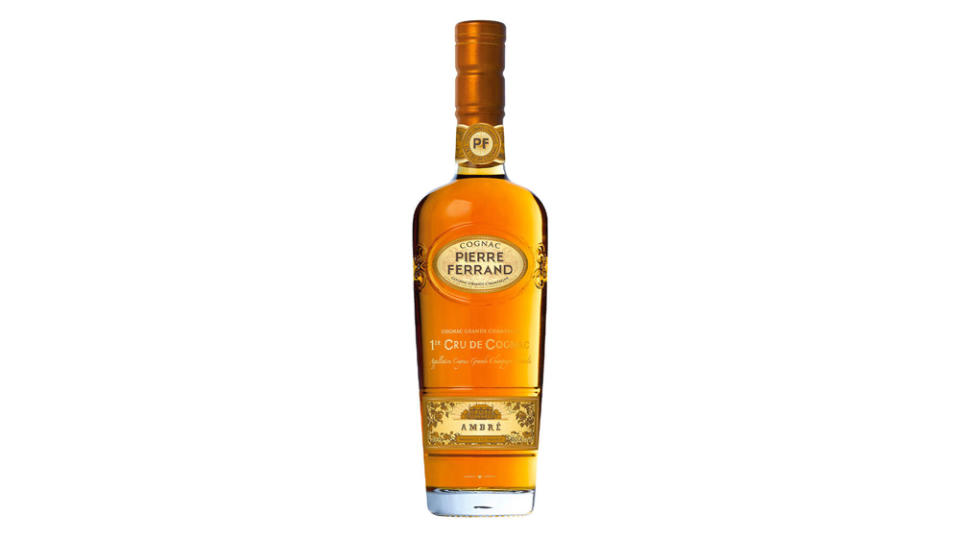How to Make a Brandy Alexander, the Classic Cognac Cocktail That’s Better Than Dessert

If someone were to create a “Guest at a Cocktail Bar” action figure and you pulled the string on the back, the first thing it would say is “not too sweet.”
Bartenders get this so much it’s become a cliche. I’ll hear “please make it less sweet” from people who have never been to the bar before and are ordering the drink for the first time (this sometimes invites the question “less sweet than what?” to which I get varying answers, but the overall theme is “less than I’m afraid it’ll be”). Admittedly, too much sweetness is the most common flaw across all mixed drinks in general, so it’s understandable that this has become something of a rallying cry among the drinking public. The problem is that this posture blinds people to some of the most delicious drinks available to them
More from Robb Report
How to Make a Lion's Tail, the Bright and Complex Bourbon Cocktail That's Perfect for Fall
The 50 Best Cocktail Bars in the World, According to a New Ranking
How to Make a Breakfast Martini, the Tangy Gin and Marmalade Cocktail
In the quest to make sure our cocktails aren’t toosweet, we’ve completely written off the charm of cocktails that are supposed to be sweet. It’s a strange disconnect; the same people who will greedily rub their hands together at the mere mention of dessert will snub their nose at the universe of dessert cocktails out there, which is a shame because not only are sweet drinks the only decent pairing for sweet foods, but they’re ounce-for-ounce as delicious as any other liquid you could drink.
Consider the Brandy Alexander, a cocktail so old the mere mention of it invites the images of grandparents and gramophones. The Brandy Alexander is brandy (Cognac, usually, that most celebrated type of brandy), crème de cacao, and cream. Almost as early as you can find it mentioned you can find it insulted and dismissed—in 1930’s host guide Shake Em Up, authors Virginia Elliot and Phil D. Strong lump it into a category for “tender young things who have just been taken off stick candy,” and offer that you can use crème de cacao to “make them up some kind of [drink] and push them under the piano to suck on it.” The reliably grumpy David Embury, in 1948, calls it “deadly” because it “taste[s] harmless,” and waves it off as “a futile waste of good liquor.”
If you catch yourself nodding along, I have a question for you: Have you ever actually tasted a Brandy Alexander? If you had, you’d already know that the Brandy Alexander is not just worth your time but is in fact shockingly delicious, and one of the best things you can have after a meal. There is, of course, a way to make it too sweet, but increase the measure of Cognac just a touch and the drink becomes locked into balance, a decadent delight, the chocolate and cream round and deeply satisfying, all driven by the Cognac’s powerful oak and fruit.
Given that it’s Halloween, you should have a Brandy Alexander. Drink one after dinner. Pair it with some leftover Snickers you haven’t managed to give away to neighborhood children, or just enjoy one as a replacement for that. It is, after all, like candy for adults. Is it “too sweet” for lunch, or for happy hour, or for pairing with an entree? It is, yes. But is it “too sweet” for times when a little bit of sweetness is called for? Try one out and see.
Brandy Alexander
1.5 oz. Cognac or brandy
1 oz. cream
1 oz. crème de cacao
Add all ingredients to a cocktail shaker with ice and shake hard for eight to 10 seconds. Strain off the ice into a cocktail or coupe glass, and garnish with a shave of fresh nutmeg.
NOTES ON INGREDIENTS

Ratios: Classic ratios are equal parts. This, to me, actually is too sweet, and tastes like melted ice cream—wonderful, but a bit too much. The way drinks work, though, is that when you dial up the measure of the spirit, the sweetness begins to fall away. It’s possible to do this to such an extent that it no longer is categorized as a sweet drink at all, so personally, I find the ratio above (3:2:2) maintains the intention of the original drink but puts it into a better balance.
Brandy: You don’t need Cognac here, and lots of good Spanish or American brandies can work well, but Cognac is a good go-to because it’s broadly available and reliably excellent. What you want is the power of something well-aged, V.S.O.P or even X.O (or in the case of Spanish Brandy, 10+ years). The younger the Cognac, the more the bright stone-fruit characteristics are evident, and while that’s still delicious, it’s not quite as good as the older, more oak- and leather-heavy Cognacs. I’m a big fan of the combination of power and price-point of Remy Martin 1738, as well as the slightly more niche Pierre Ferrand Ambre, or the easily available Hennessy V.S.O.P.
Other Spirits: The original Alexander Cocktail was with gin, actually, which is why this is specifically called a Brandy Alexander (it has also answered to “Alexander No. 2” and “Panama Cocktail”). It’s phenomenal with gin, as well as other spirits—tiki father Trader Vic had the Alexander Baby, which was with Barbados Rum. Some people use bourbon. I think Cognac is the best choice, but you can play around, as well as branch into liqueurs: Subbing the spirit with green crème de menthe will give you a Grasshopper, with crème de noyaux will give you a Pink Squirrel, crème de banana will give you a Banshee, you can go on and on. Cream and crème de cacao make everything delicious.
Crème de Cacao: This is a big choice in terms of the taste of the final product. Crème de cacao comes in two types: White (distilled) or dark (sometimes distilled but definitely infused).
Most recipes don’t specify, but as best we can tell, the original Alexander was created adjacent to an advertising campaign for the Lackawanna Railroad and their character of the all-white clad Phoebe Snow (Ms.Snow’s white clothing was only possible because of the new, clean-burning anthracite coal the railroad used in their engines, where all other coal locomotives would stain their passengers with soot). The veracity of these claims is immaterial—the point is the original drink would’ve been snow white, so if we want to be historically accurate, white crème de cacao is the one to use. This is the recipe you’ll find in the excellent Cocktail Codex by the Death and Company people, and will give the drink a nutty, somewhat ethereal chocolate note. If you want to go this way, by way of brands, Giffard is my favorite, alongside Marie Brizard and Bols.
My personal preference, though, is to use dark crème de cacao. Because it’s got a chocolate infusion, the cocoa note is deeper, rounder, and richer. With the recipe above the cocktail isn’t as sweet as it sounds, and I felt like dark crème de cacao offered a resonance that I very much appreciated. My favorite brand is the Tempus Fugit for its intensity. There are a wealth of quality options though, like the Mozart Dark Chocolate Liqueur, and the aforementioned Marie Brizard and Bols.
Cream: The older recipes almost invariably call for heavy cream, but as with my White Russian, I find heavy cream to be overkill. It’s good, but when I use half-and-half, I think the drink is lighter and honestly tastier, and I don’t miss the richness. Whole milk doesn’t really work here, a bit too thin. If you use whole milk (or oat, the richest of the milk alternatives), I’d increase the measure to 1.5 oz.
Nutmeg: Pretty much everyone calls for a grate of fresh nutmeg on top, and with good reason. It charms the drink, giving it an appealing and exotic spice note. It’s worth having a nutmeg bulb and a microplane around for this purpose. Not as good (but still better than nothing) is a dash of cinnamon, which you don’t have to grate fresh and which still adds, though it takes the reins of the drink and pulls it in a different direction.
Best of Robb Report
Why a Heritage Turkey Is the Best Thanksgiving Bird—and How to Get One
The 10 Best Wines to Pair With Steak, From Cabernet to Malbec
Sign up for Robb Report's Newsletter. For the latest news, follow us on Facebook, Twitter, and Instagram.


